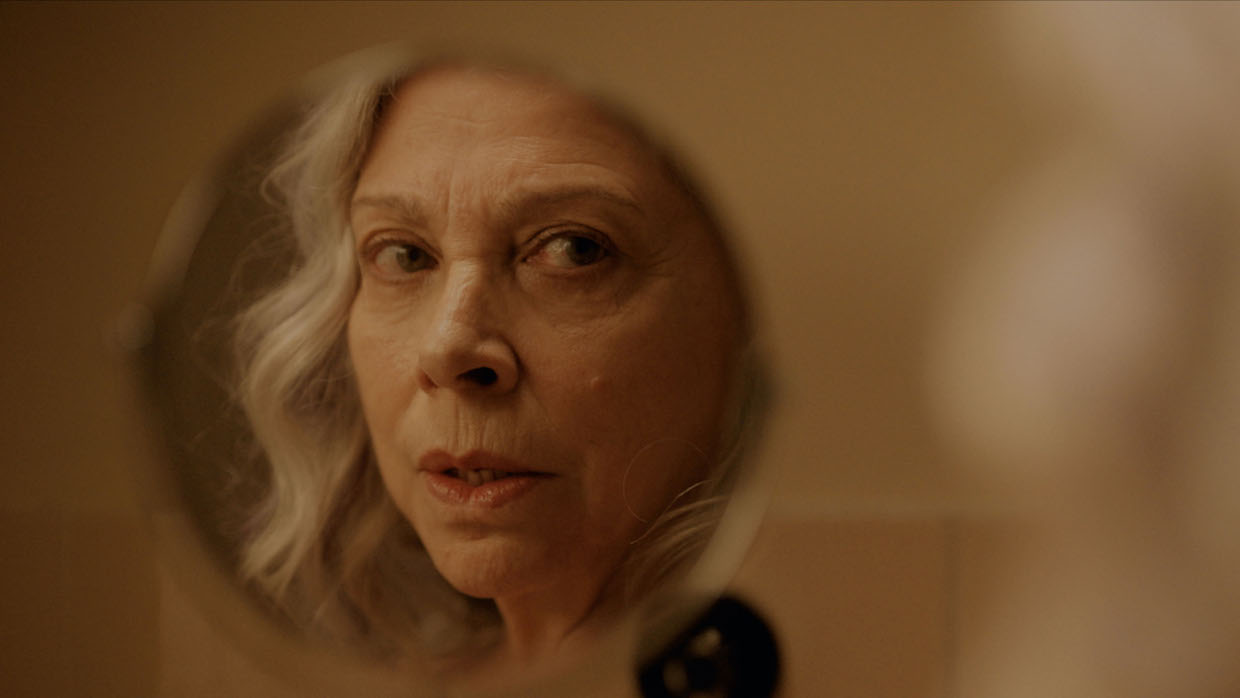 Back to selection
Back to selection
“The Main Goal Was To Make the Audience Connect With an Unusual Protagonist”: Editor Fàtima de los Santos on MAMACRUZ
 MAMACRUZ, courtesy of Sundance Institute.
MAMACRUZ, courtesy of Sundance Institute. A routine Internet search turned pornographic discovery is what prompts Cruz (Kiti Mánver), a devoutly religious grandmother, to experience a latent sexual awakening. Though she’s initially stricken with a classic case of God-fearing shame, Cruz embarks on a path of sensual self-discovery via a local women’s sex therapy group in MAMACRUZ, Patricia Ortega’s latest film.
Editor Fàtima de los Santos discusses how she got the audience to connect with an “unusual” protagonist, how she aided in changing the MAMACRUZ‘s narrative structure and the difficulty of working on a film without background music.
See all responses to our annual Sundance editor interviews here.
Filmmaker: How and why did you wind up being the editor of your film? What were the factors and attributes that led to your being hired for this job?
De los Santos: The first documentary I worked on was directed by José Ortuño, the scriptwriter of MAMACRUZ, and produced by Olmo [Figueredo], the producer of this film. This was 15 years ago and, since then, we have worked together on a number of documentaries, series and films. We understand each other and complement each other very well. I didn’t know Patricia [Ortega] before this project but it was love at first sight. Working with her is great, she would give you a lot of freedom but at the same time, she’s very straightforward about what she wants. She’s amazing!
Filmmaker: In terms of advancing your film from its earliest assembly to your final cut, what were goals as an editor? What elements of the film did you want to enhance, or preserve, or tease out or totally reshape?
De los Santos: The main goal was to make the audience connect with an unusual protagonist: an older lady from the suburbs, with strong religious beliefs as well as marital and sexual problems. And we also had to achieve this with a balanced tone between drama and comedy, maintaining it throughout the film and making it all work.
Filmmaker: How did you achieve these goals? What types of editing techniques, or processes, or feedback screenings allowed this work to occur?
De los Santos: We worked on making different versions of certain sequences and then we had complete screenings to assess what worked best. If we spotted something that felt wrong, we tried to minimize it or even take it out, if the story allowed it. If we saw that something worked, we enhanced it. We also did a few screenings with part of the team to receive some external feedback.
Filmmaker: As an editor, how did you come up in the business, and what influences have affected your work?
De los Santos: When I finished university I started working at La Claqueta, a production company that grew a lot during the years I worked there. That experience allowed me to work with many professionals from Seville, so I would say that my influences have been local. Obviously, I also admire several great Spanish and international editors, but when I edit a film I try to find its own language.
Filmmaker: What editing system did you use, and why?
De los Santos: We have worked on Final Cut X, it is a highly stable software and on macOS it manages the hardware resources really well. On top of that, editing can be done very quickly thanks to its system to organize the footage and its magnetic timeline.
Filmmaker: What was the most difficult scene to cut and why? And how did you do it?
De los Santos: I think the most difficult sequence was the penultimate one, it was a climax in every sense and we needed it to be “felt”. We worked a lot on the pace and the sound to make it feel both liberating and sensitive at the same time. Another challenge as an editor has been to work with virtually no background music. At first, I thought we wouldn’t make it, but we did and it worked.
Filmmaker: What role did VFX work, or compositing, or other post-production techniques play in terms of the final edit?
De los Santos: Patricia shoots almost without chroma keying, all the devices and video calls were made on set, so most of the VFX we used were aimed at improving the shot, in terms of continuity and narrative. [VFX Supervisor] Amparo Martínez has done a great job.
Filmmaker: Finally, now that the process is over, what new meanings has the film taken on for you? What did you discover in the footage that you might not have seen initially, and how does your final understanding of the film differ from the understanding that you began with?
De los Santos: When I finished the first cut, in which I strictly followed the script, I thought the result was a very linear film in which we couldn’t shift many sequences from their original order. But I was wrong. We ended up changing the structure of the film so that Cruz’s journey would flow better and to create more empathy with her. We also removed entire sequences and did some re-takes that were necessary to allow the film to breathe.
